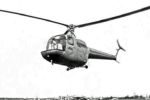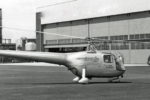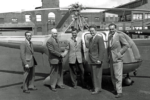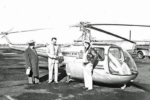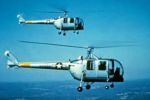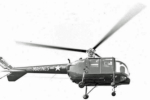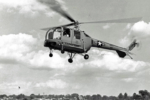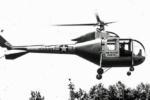Sikorsky Product History
Sikorsky S-52
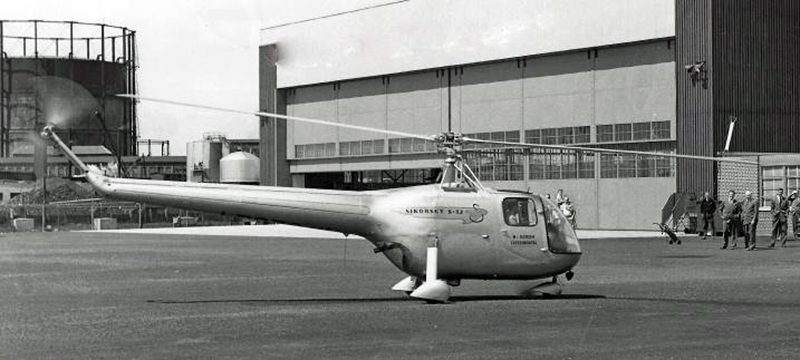
Background
The Sikorsky S-52 was a two place, side by side helicopter designed primarily for simplified construction, ease of maintenance, and economy of operation. The three bladed single rotor system utility helicopter was built completely at Sikorsky’s expense as a follow-on to the successful S-51 (HO3S/H-5E) helicopter. Authorization to proceed with design and development of three 2-place helicopters was released on February 15, 1946 with a budget of $300,000. The S-52 was the first American helicopter with all metal main and tail rotor blades. It was also the first Sikorsky helicopter that had an offset flapping hinge that became a trademark design feature of all Sikorsky models ever since. The offset flapping hinge was the feature that provided the great maneuverability and acrobatic capability that was demonstrated by the S-52 and described below. The main rotor blades are all interchangeable and contribute to a smooth flight. The S-52-1 helicopter featured a tricycle landing gear configuration while the S-52-2 and S-52-3 featured a quadricycle landing gear with full castoring, self-centering front wheels. The helicopter was originally designed as an observation helicopter but was later redesigned as a MEDEVAC helicopter carrying 2 litter patients and an attendant inside the cabin.
The S-52-1 demonstrator was extensively demonstrated at U.S. Army facilities in Fort Monroe, Virginia, Fort Bragg, North Carolina, Camp Carson, Colorado (Altitude 5,800 Ft.), and Camp Hale Colorado (Altitude 10,100 Ft.). It was also demonstrated to the U.S. Air Force at the Pentagon and Wright Field, Dayton, Ohio; the U.S. Marine Corps at Quantico, Virginia and the U. S. Navy at the Naval Test center, Patuxent River, Maryland and NAS Lakehurst, New Jersey. During these demonstrations the helicopter was flown by over 40 Military Pilots and carried over 500 passengers. It demonstrated successful autorotations at density altitudes of over 12,000 feet at Leadville, Colorado. During 10,000 miles of cross country flying, the S-52-1 helicopter averaged 88 miles per hour using less than 60 percent power.
In spite of these efforts, no production contracts were received. The Army ordered 4 development helicopters for evaluation. The demand for helicopters to support Korean War requirements resulted in the USMC ordering the S-52 helicopter in large quantities with the USCG ordering eight helicopters during the same time frame.
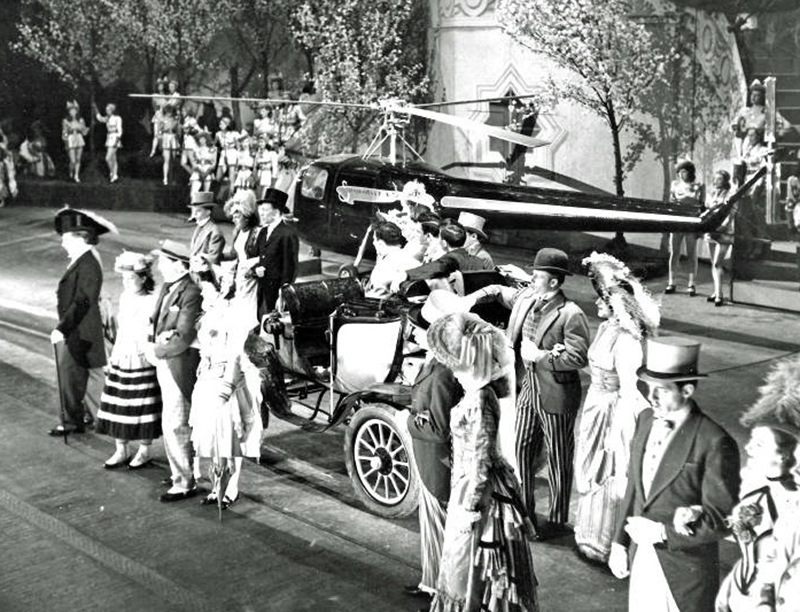
S-52 Development Timeline
First Flight
Public Debut
CAA Type Certificate Issued
First Flight of S-52-1
World Speed Record Set
100 km World Speed Record Set
First Helicopter to Perform a 360 Degree Loop
Altitude Record Set
First Flight of S-52-2
First Delivery to U.S. Army
First Flight of the S-52-3
CAA Type Cert. Issued for S-52-2
First S-52-3 Delivery to U.S. Marine Corps
First S-52-3 Delivery to U.S. Coast Guard
First Flight of the S-52-5
Configuration Features
The Sikorsky S-52 design featured an all-metal, semi-monocoque aluminum and magnesium alloy fuselage. Noteworthy features included all-metal main and tail rotor blades, a new design main rotor assembly with a 7.56 inch offset flapping hinges , a simplified transmission system, engine silencer, low noise level cabin, and numerous design features contributing toward long service life and ease of maintenance. The new type main rotor assembly in combination with the all-metal blades resulted in outstanding performance, greatly increased Center of Gravity (CG) travel, positive controllability with minimum lag and almost complete absence of vibration.
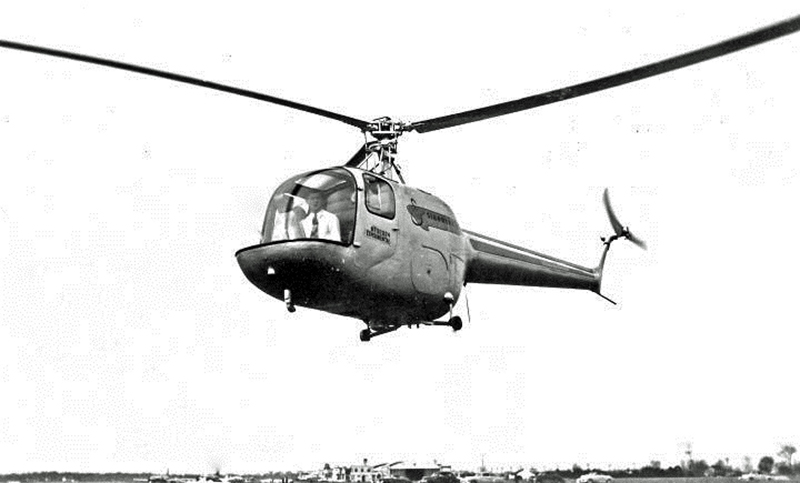 S-52-1 NX92824 after Setting 100 km Speed Record
S-52-1 NX92824 after Setting 100 km Speed Record Sikorsky S-52
Sikorsky S-52 SikorskyTest Pilot Tommy Thompson Congratulated by Bernard Whalen-Sikorsky General Manger after Performing Loops with the S-52-1. To his left are Ralph Alex-S-52 Project Manager and Adolf Plenefisch-Crew Chief
SikorskyTest Pilot Tommy Thompson Congratulated by Bernard Whalen-Sikorsky General Manger after Performing Loops with the S-52-1. To his left are Ralph Alex-S-52 Project Manager and Adolf Plenefisch-Crew Chief U.S. Army CAPT Hubert D. Gaddis after Setting Altitude Record Pictured with Walter Goddard-Official Observer and Charles Logsdon-Chairman of the NAA Checking the Barographs Used in the Climb
U.S. Army CAPT Hubert D. Gaddis after Setting Altitude Record Pictured with Walter Goddard-Official Observer and Charles Logsdon-Chairman of the NAA Checking the Barographs Used in the Climb U.S Army YH-18A Serial No. 49-2889 and 49-2890
U.S Army YH-18A Serial No. 49-2889 and 49-2890 USMC HO5S-1 Helicopter
USMC HO5S-1 Helicopter USCG HO5S-1G Helicopter
USCG HO5S-1G Helicopter YH-18B(S-52-5) Helicopter Powered with an Artouste XT51-T-3 Turbine Engine
YH-18B(S-52-5) Helicopter Powered with an Artouste XT51-T-3 Turbine Engine
The S-52 helicopter was designed with the benefit of the knowledge acquired by 50,000 Sikorsky helicopter hours which was 80% of the world’s helicopter hours at the time.
Design goals for the S-52 were simplicity of construction utilizing time-proven, standard commercial quality, volume produced aircraft and automotive parts. The entire tail cone outer skin was made of only two pieces; the main landing gear legs is a one-piece monocoque construction; the tail rotor pedals, dural forgings, are used on several other planes and were not a Sikorsky peculiar design. The main rotor dampers employed automotive type shock absorbers.
Main Rotor Assembly
The entire rotor system was designed with sealed lubrication requiring repacking only at overhaul periods. In developmental testing this proved impracticable and grease fittings were added for production helicopters with periodic servicing requirements. The main rotor blades were attached to the hub with standard propeller type thrust nut collars. The main rotor retention bearings were standard commercial quality stack radial thrust bearings. The flapping and drag hinge bearings were commercial quality tapered roller bearings. The main rotor contained only 36 major parts.
Main Rotor Blades
The main rotor blades are made in two sections. The leading edge (spar) was made of a hollow one-piece extrusion of 61 ST aluminum alloy. The rear section (pockets) was made from thin dural sheets attached to the spar with rivets and cement held in contour by rib formers. The blades had a NACA 0012 air foil with constant cord and washed out 6 degrees. The all metal construction resulted in an extremely smooth surface and high efficiency due to a minimum of profile drag
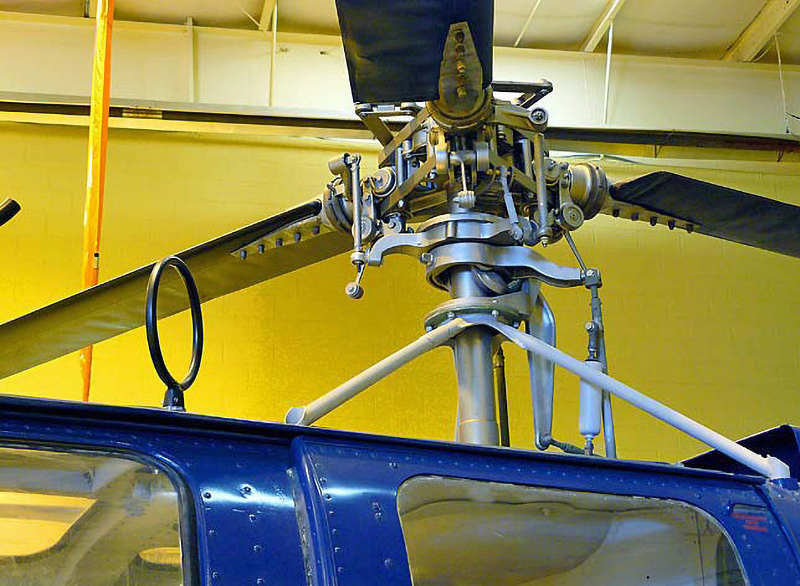
Tail Rotor
The all metal tail rotor blades were of a similar construction to the main rotor blades. The 2 blade tail rotor flapping was accomplished by see-saw action of a one-piece tail rotor hub that included 45 degree delta-three coupling. This design reduced the centrifugal load on the flapping hinge bearings since each blade reacts the others centrifugal force.
Fuselage
The fuselage was constructed of 3 sections:
Cabin and center section was monocoque, the tail cone and its mount was monocoque, and the main rotor pylon structure which was steel tube. The major structural sheets of the center section which houses the engine was comprised of an inexpensive sandwich material, Plymetal. The material consisted of 2 sheets of .008 stainless steel bonded on either side of 1/8 inch, 3-ply plywood. The center section skin was .051 inch magnesium. The tail cone was composed of 2 pieces of .040 inch magnesium which ran the full length of the tail cone. The tail cone had 2 end bulkheads and 3 intermediate bulkheads.
General Arrangement Drawing
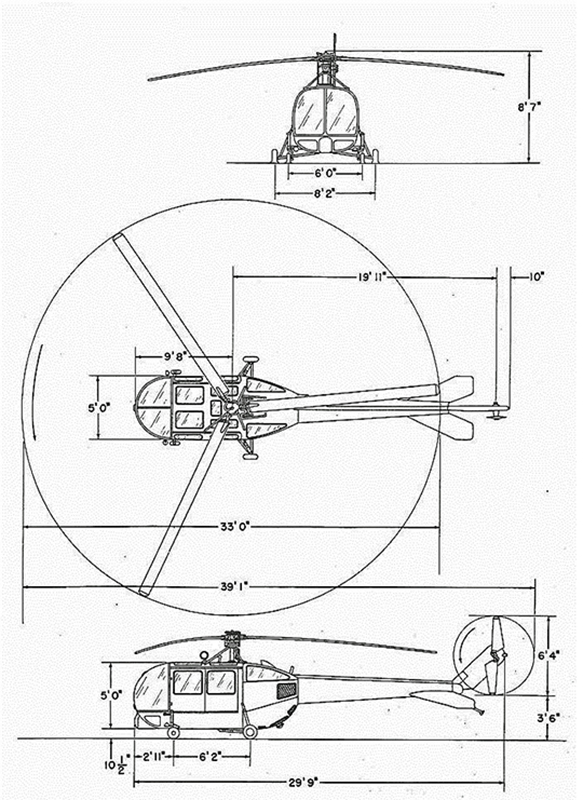
Mission Systems
The HO5S-1 was utilized by the U.S. Marine Corps primarily as a MEDEVAC helicopter carrying 2 litters internally in addition to the pilot and an attendant. This was a major improvement over the Bell HTL-4 where the wounded were carried outside. Additional duties included Command and Control, Observation and Scouting, artillery and naval gunfire spotting, transportation of personnel, and general utility missions.
They were assigned to Marine Observation Squadrons (VMO) and replaced the HO3S (S-51) helicopters in 1952.
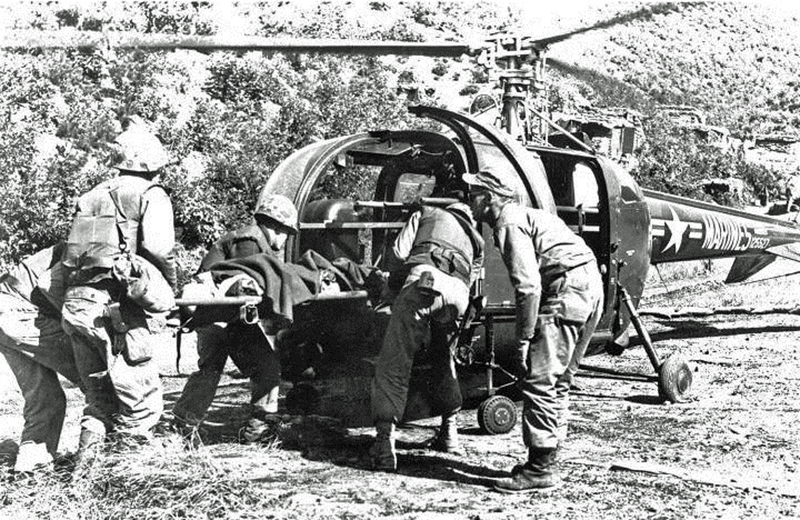
General Characteristics and Performance for the S-52-3 (HO5S-1)
Performance Standard Day at Sea Level | |
|---|---|
Maximum Speed (Vne) | 95 kts / 175.94 km/hr |
Range | 361 nm / 668 km
|
Service Ceiling | 15,500 ft / 4,724 m
|
Rate of Climb | 1,300 ft/min / 6.6m/s
|
Hover Ceiling Out-of-Ground Effect | 5,900 ft / 1,798 m
|
Hover Ceiling In-Ground Effect | 9,200 ft / 2,804 m
|
Weights | |
|---|---|
Maximum Takeoff Gross Weight | 2,700 lbs / 1,226 kg
|
Weight Empty | 1,650 lb / 749 kg
|
Maximum Fuel Load | 387.6 lb / 176.2 kg
|
General Data | |
|---|---|
Crew Seating Capacity | 2 |
Seating Capacity | 2 passengers |
Fuel Capacity | 387.6 lb / 176.2 kg
|
Powerplant Ratings Standard Day at Sea Level | |
|---|---|
Franklin 6V6-245-B16F (Military O-425-1)
| 245 hp / 186 kw
|
Aircraft Dimensions | |
|---|---|
Main Rotor Diameter (Blade Tip Circle) | 33’ 0” / 10.00 m
|
Tail Rotor Diameter (blade tip circle) | 6′ 4″ / 1.92 m
|
Fuselage Length | 29′ 9″ / 11.84 m
|
Fuselage Width | 5′ 0″ / 1.52 m
|
Length Overall (Including Rotors) | 39′ 1″ / 11.89 m
|
Height Overall | 8’ 7” / 2.44m
|
Main Landing Gear Tread | 8′ 2″ / 2.43 m
|
Wheel Base
| 6′ 2″ / 1.83 m
|
Cabin Length | 7′ 7″ / 2.13 m
|
Cabin Width | 4′ 6″ / 1.22 m
|
Cabin Height | 5’ 0” / 1.52 m
|
Production History
A very informative video of Sikorsky Test Pilot Tommy Thomson performing loops with the S-52 was posted by his son as a tribute to his father who passed away in 2003.
The S-52-3 lives on as an Amateur Built Experimental helicopter. In 1964 Sikorsky sold all S-52-3 data and spares to Orlando Helicopter Airways, Orlando FL. In 1987 the Orlando Helicopter owner’s son founded Vertical Technologies in Sanford FL and manufactures kits for a Humingbird 260L, a highly modified S-52-3 helicopter with a Bell 206 nose and a Lycoming IVO-435-A1F derated 260 hp engine.. Ralph Alex, the retired Sikorsky S-52 Project Engineer, approved the use of the Bell 296 nose on the Hummingbird acting as an FAA Designated Engineering Representative (DER).

- by Vinny Devine
Related Articles
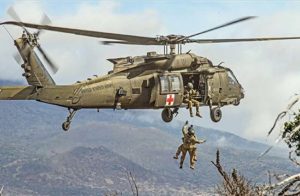
Sikorsky Lifts the Army
The U.S. Army saw the possibilities of the helicopter early in its development, thus beginning a relationship with Sikorsky Aircraft that continues to this day.
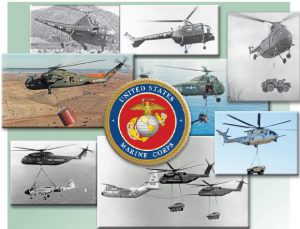
Sikorsky Builds Marine Corps Heavy Lift
The evolution of the Marine Corps’ CH-53K King Stallion heavy lift helicopter beginning with the Sikorsky S-56 in 1953.
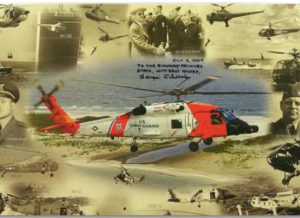
Sikorsky Serves the Coast Guard
A flight demonstration of Igor Sikorsky’s VS-300A helicopter at Bridgeport, Connecticut in April 1942 started an air-sea rescue revolution in the U.S. Coast Guard.
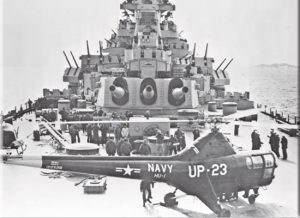
Sikorsky Helicopters Came of Age in the Korean War
Prior to the Korean War, the U.S. armed forces had few helicopters and little combat helicopter doctrine. The Korean conflict drove rapid combat helicopter development.
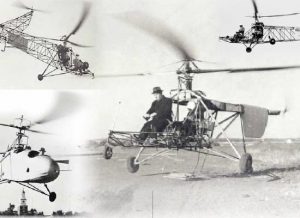
75th Anniversary of the S-46 (VS-300)
During this period, Sikorsky Aircraft designed, developed, and produced the S-47 (R-4), S-48 (S-5), S-49 (R-6), S-51, S-52, and S-55 helicopters.

